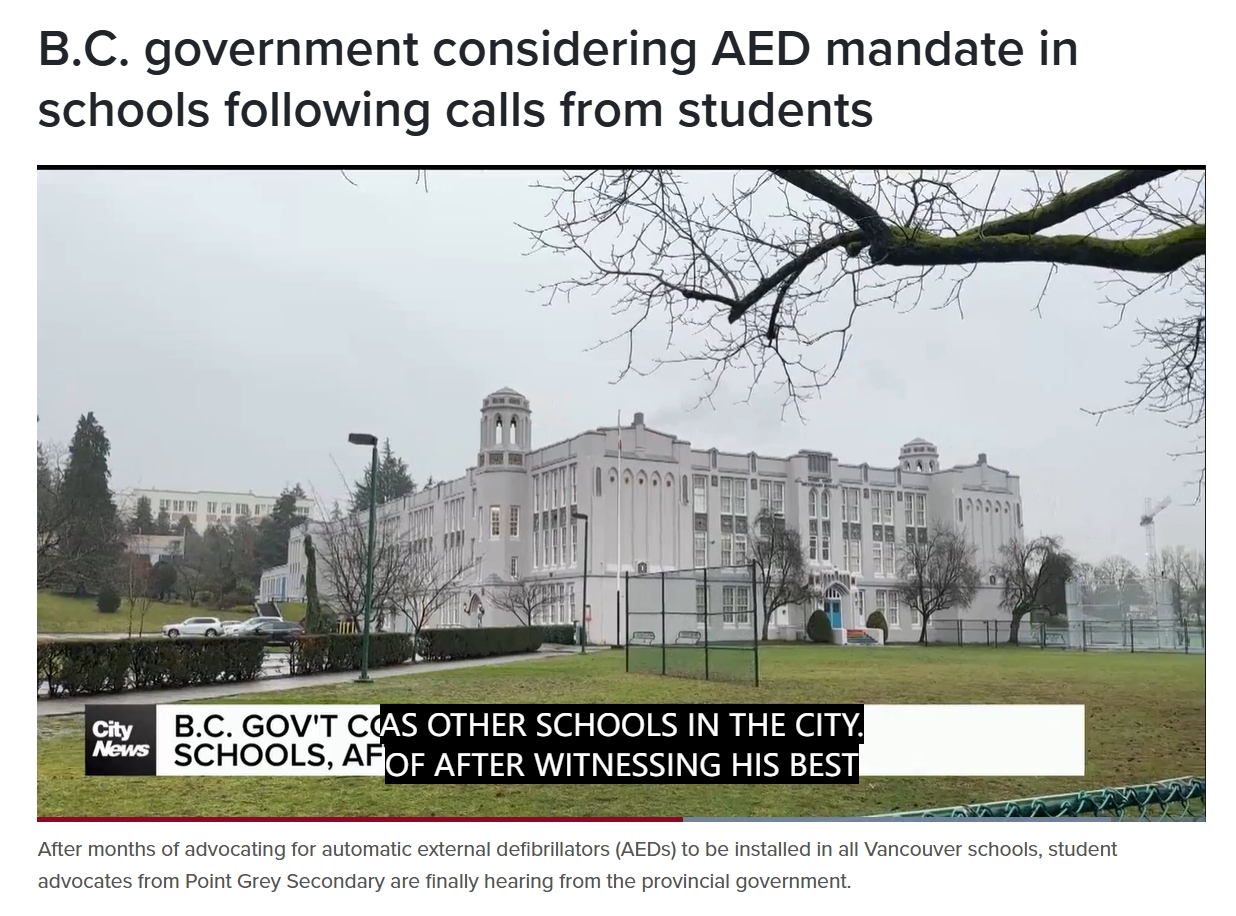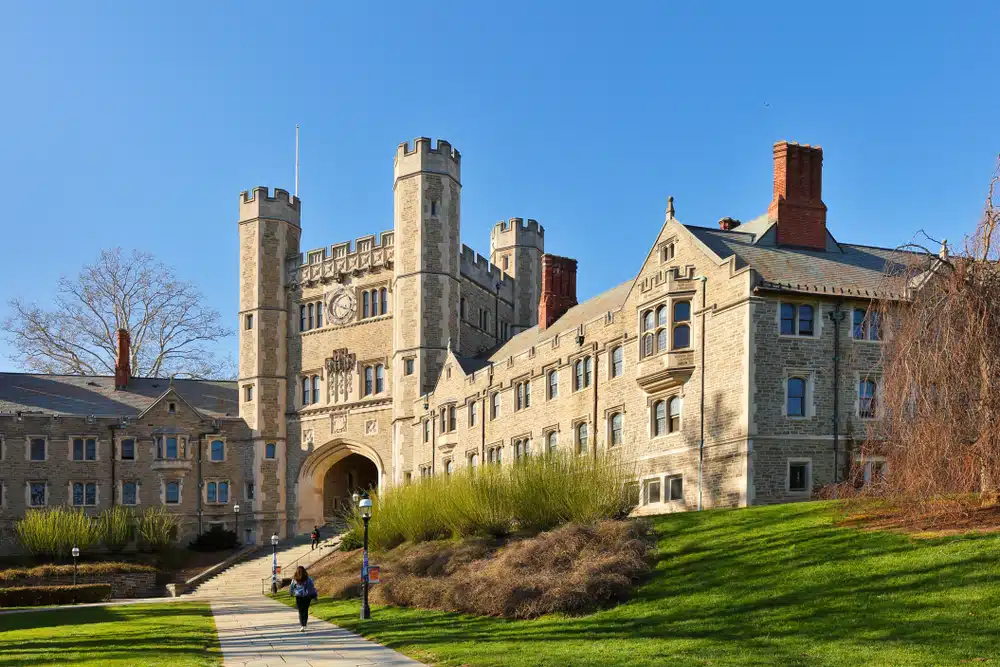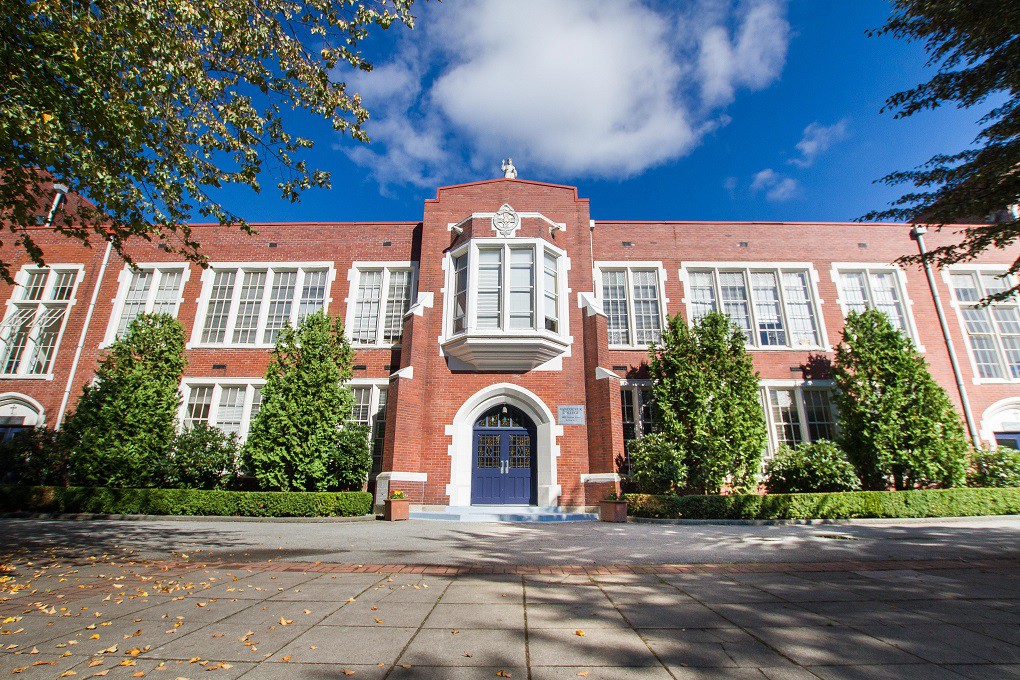When the 2025–2026 school year begins this fall, British Columbia’s Grade 10 students will be learning more than sports drills in gym class. A new provincial mandate requires CPR and AED training to be taught as part of physical education. Additionally, all secondary schools must be equipped with AEDs and naloxone kits by the end of 2025.
This major shift in school policy was not driven by bureaucracy—but by students.
A 2022 Campus Tragedy Sparked Student Action
Back in 2022, during a basketball tryout at a Vancouver high school, a 14-year-old student collapsed due to sudden cardiac arrest. There was no AED on site. His classmates tried to help, emergency services were called, but by the time paramedics arrived, it was too late.
One of his best friends, Tobias Zhang, was in Grade 9 at the time. That moment would shape the next few years of his life.
From Personal Loss to Province-Wide Change
In late 2024, Tobias and his peers founded “Students for AED,” a student-led advocacy group. They petitioned school boards, organized fundraisers, and gained support from city councillors, school trustees, and federal officials. Their mission: to ensure no student would ever face the same fate due to a lack of basic emergency equipment.
By early 2025, their message reached the Ministry of Education.
BC’s new mandate:
-
All Grade 10 students must receive CPR and AED instruction in PE;
-
All secondary schools must install AEDs and naloxone kits by the end of 2025;
-
Elementary and middle schools must follow by September 2026.
Naloxone Kits: A Response to the Drug Crisis
Beyond cardiac emergencies, the inclusion of naloxone kits in schools addresses another major public health concern: BC’s toxic drug crisis.
Since the declaration of a public health emergency in 2016, over 16,000 people in BC have died from drug overdoses—making it the leading cause of death for residents aged 10 to 59.
Following the death of a university student in 2024, the coroner’s inquest recommended naloxone and overdose education be included in the curriculum. This 2025 reform now brings those suggestions into reality.
Still No Funding: Districts Must Pay for Equipment
Despite the province-wide mandate, the Ministry has not provided dedicated funding. This means school districts like Vancouver must purchase AEDs and naloxone kits with existing or private funds.
Thankfully, Tobias and his group raised over $14,000 to support equipment purchases, showing that grassroots activism can lead not just to policy change—but real impact.
Education That Could Save Lives
The 2025 CPR and AED reform is more than just a curriculum update. It’s a powerful example of how youth-led advocacy can drive systemic change—and how schools can be places where life-saving skills are taught alongside academics.
This fall, BC becomes a model for modern, responsive education—built by students, for students, to protect all students.










Leave A Comment